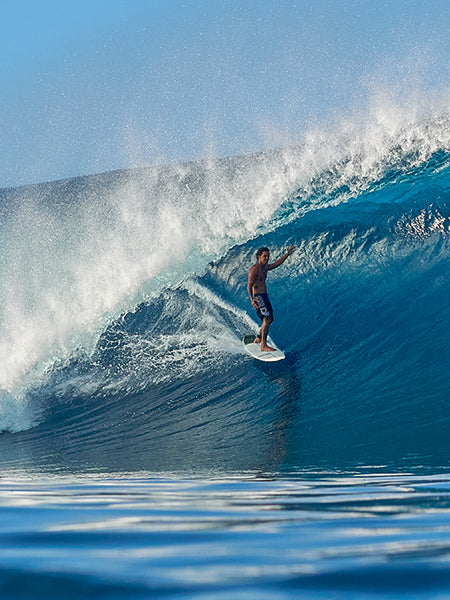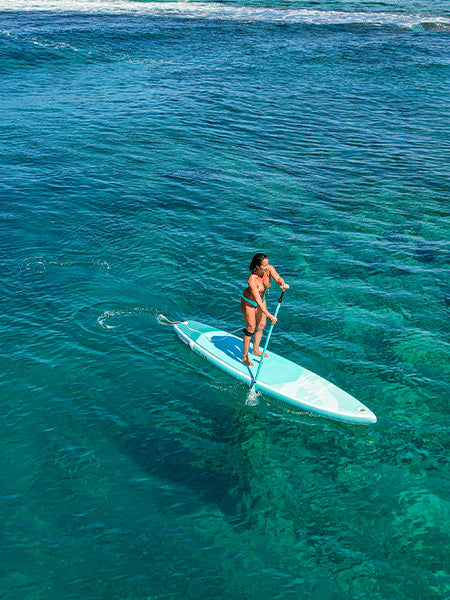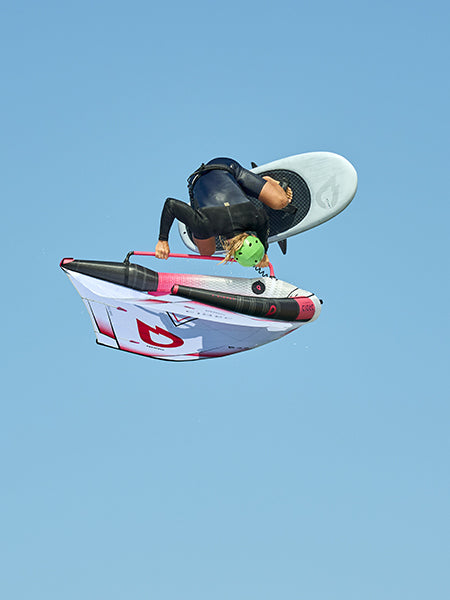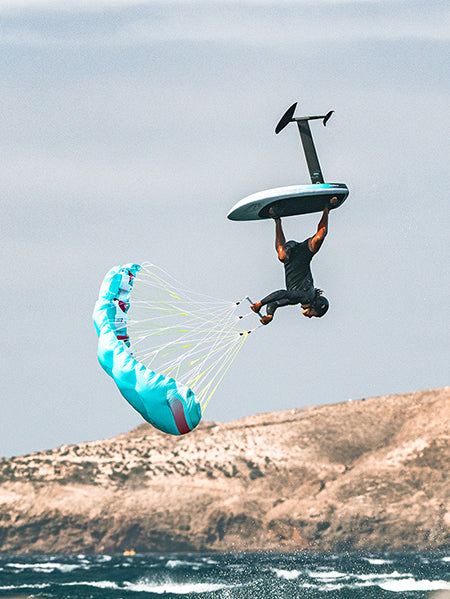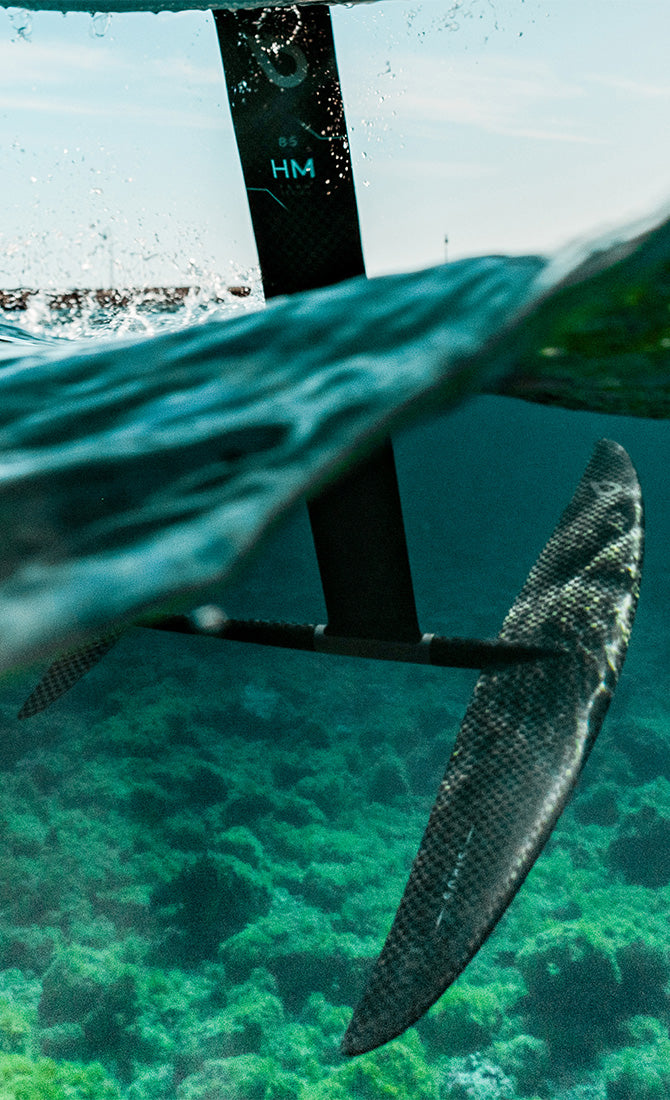Tack in flight
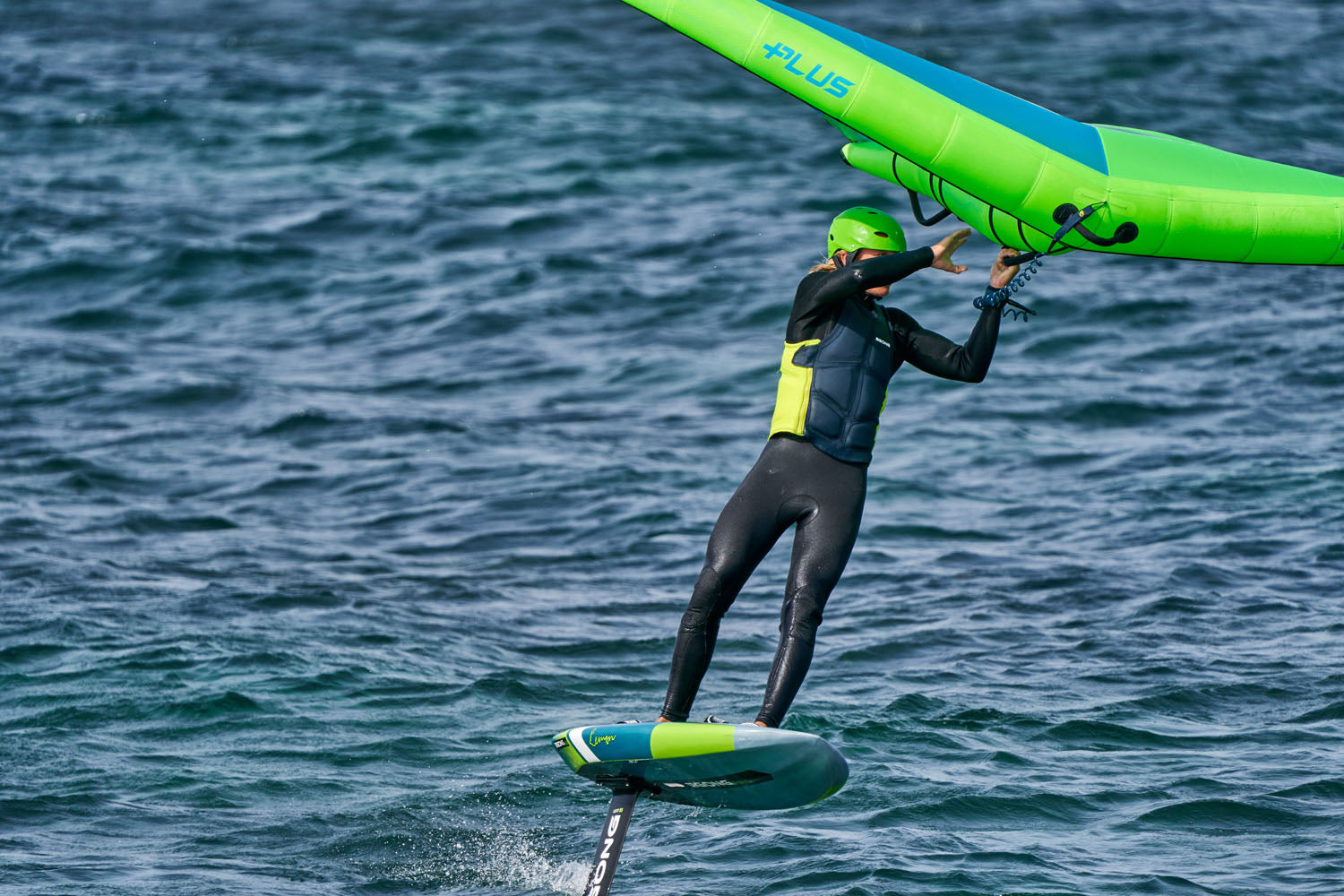
There are two main ways to tack with a wing depending on whether you switch before or after passing the wind axis. The simplest is to tack on your natural stance, goofy or regular. Depending on which edge you are on, you will either switch to tack (this is the easiest) or tack to switch to the other side. While knowing that becoming symmetrical will be a long and complicated exercise.
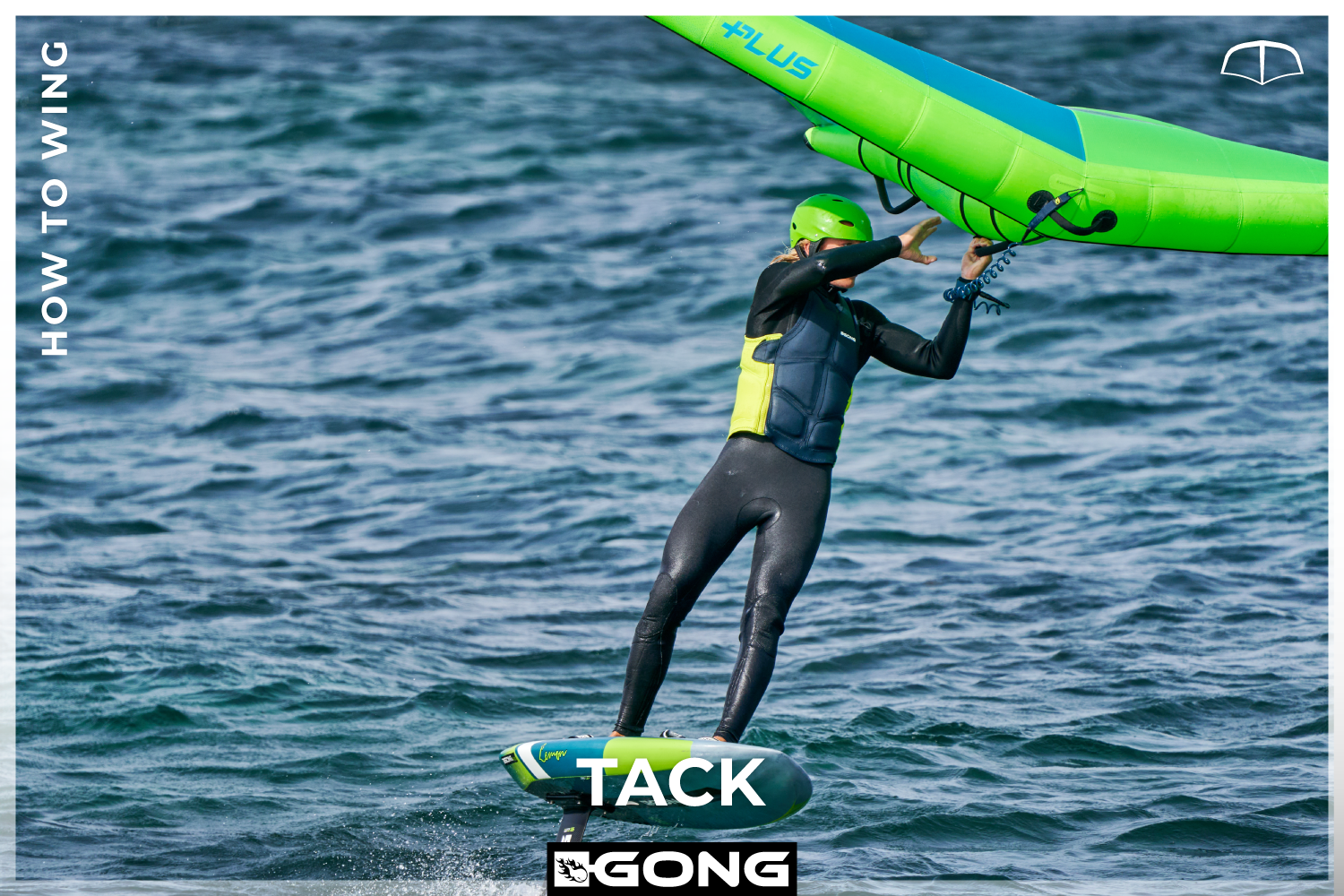
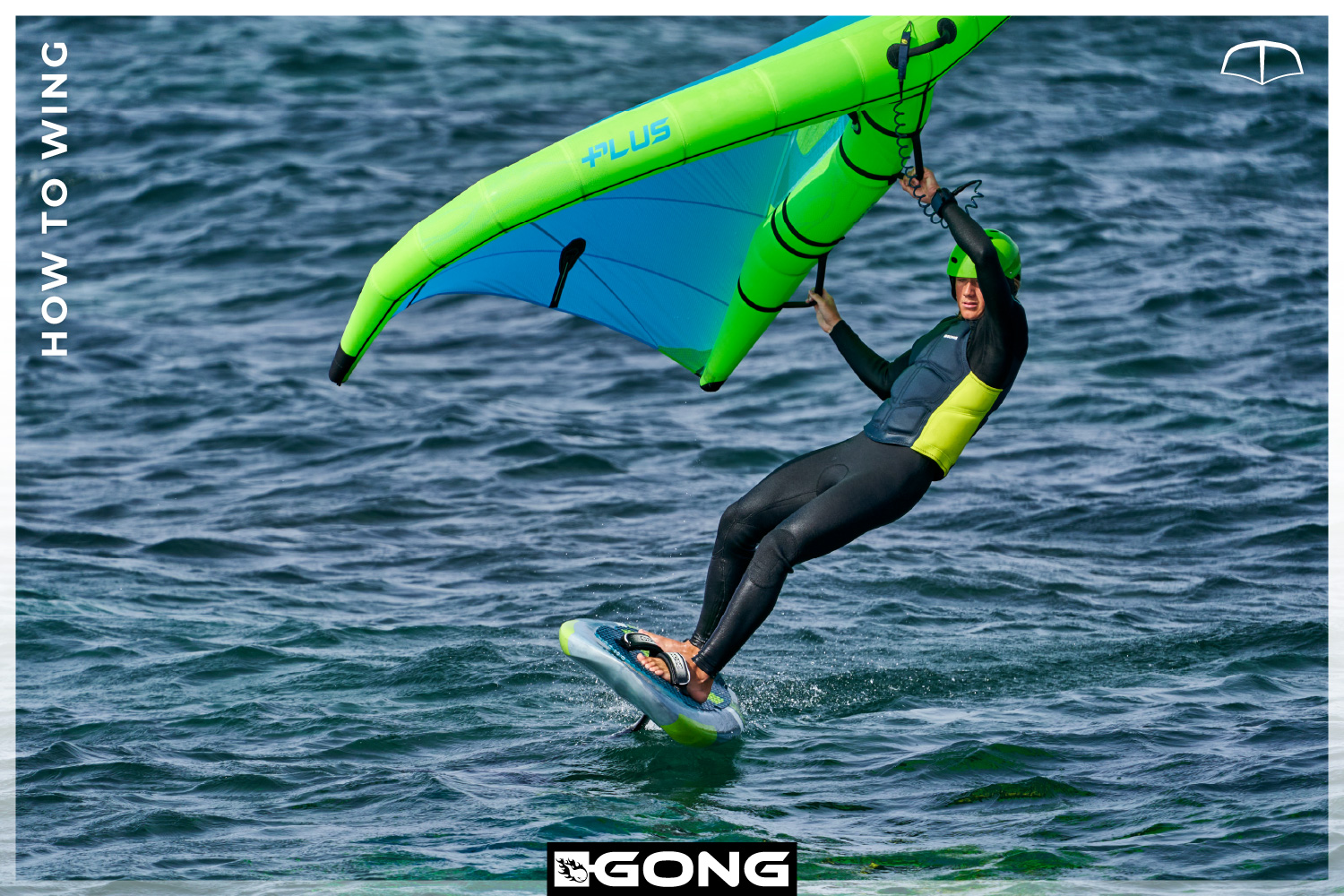
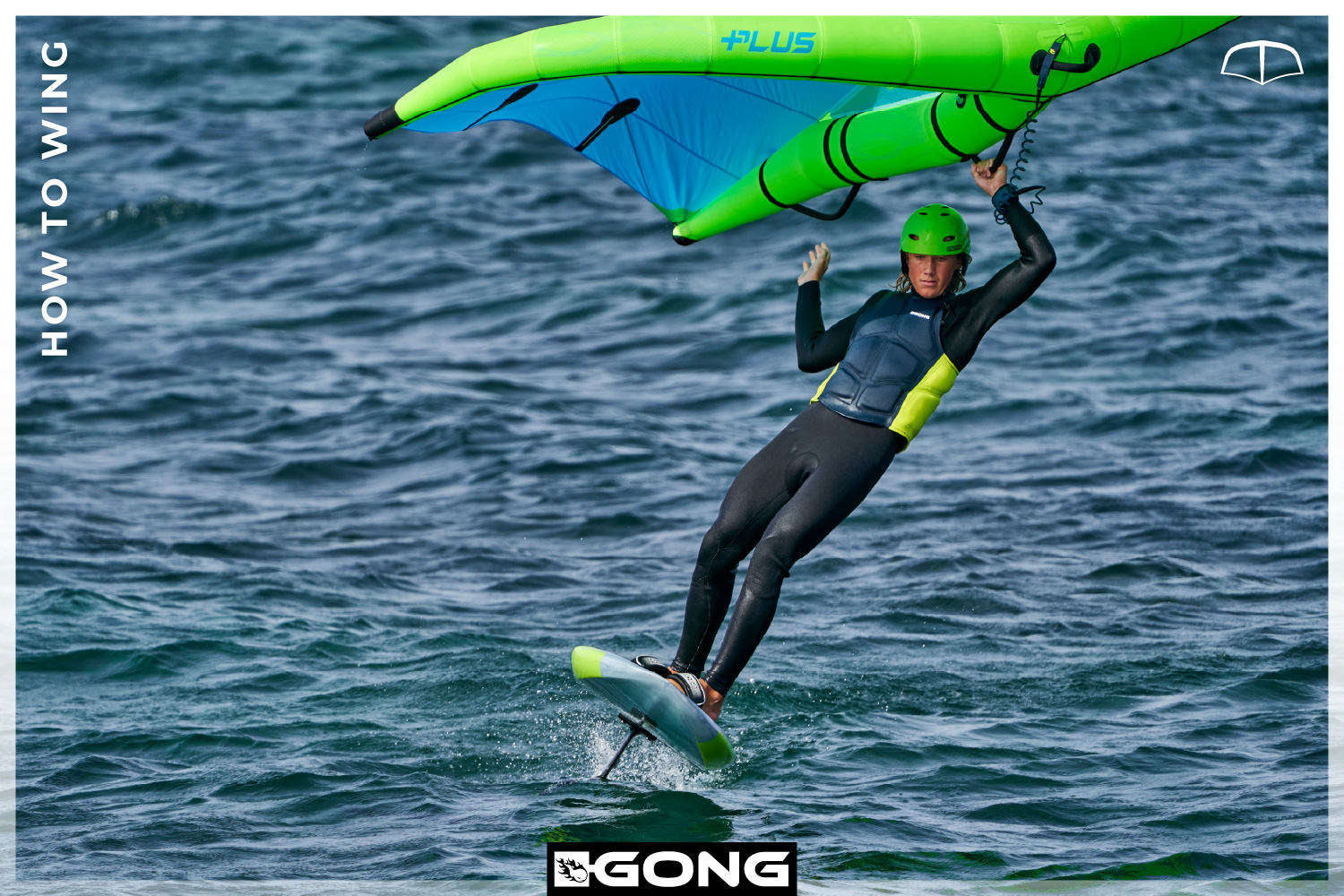
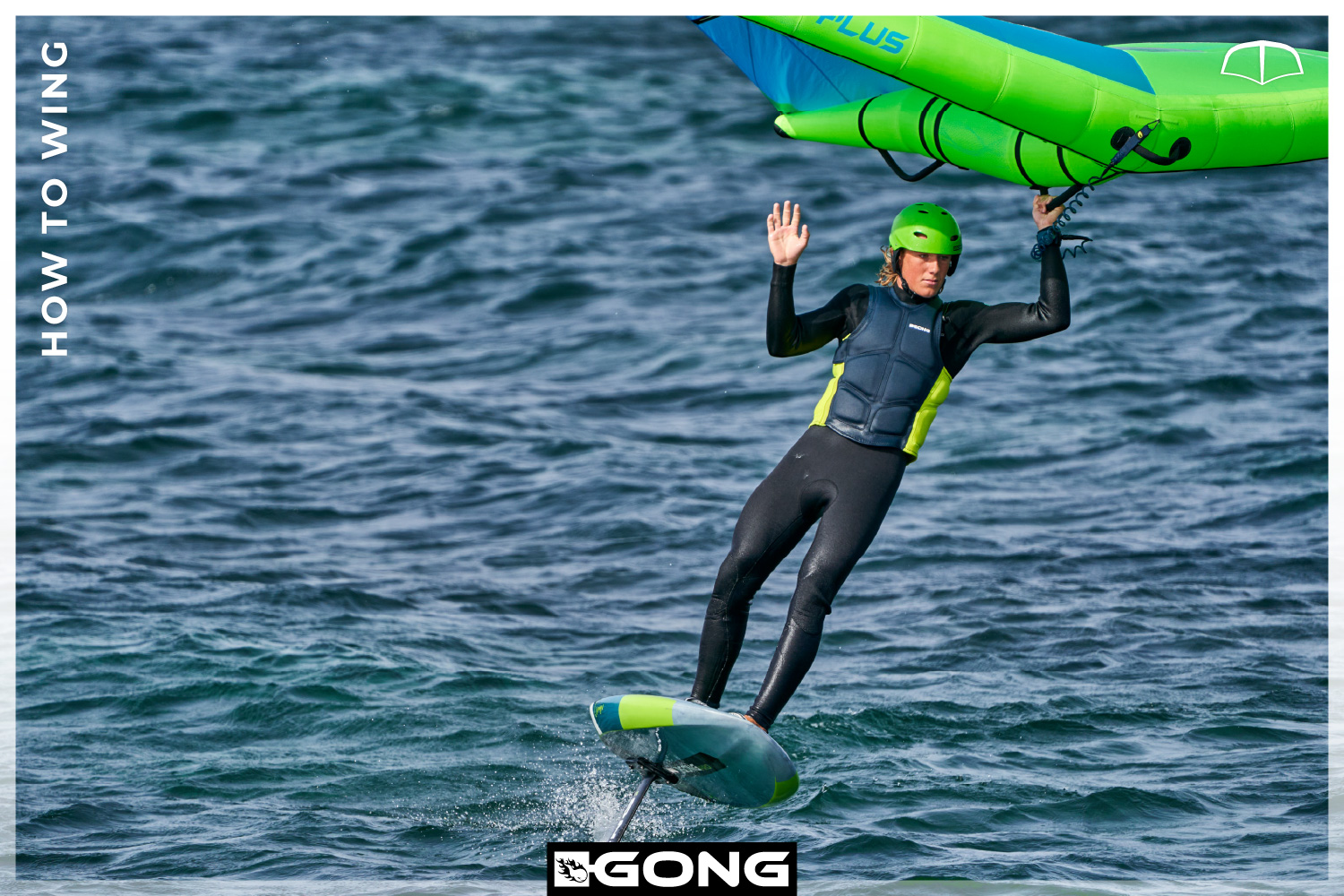
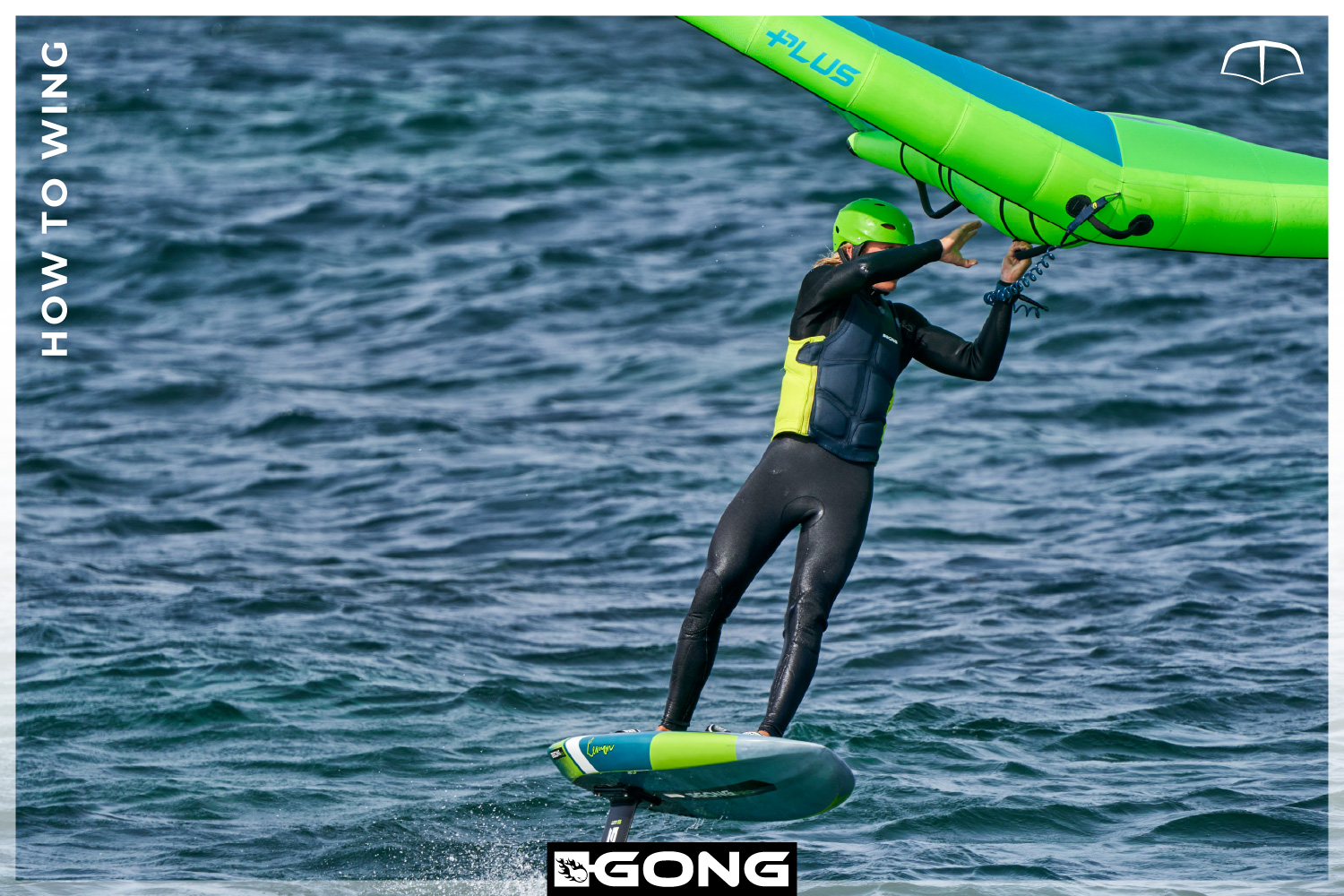
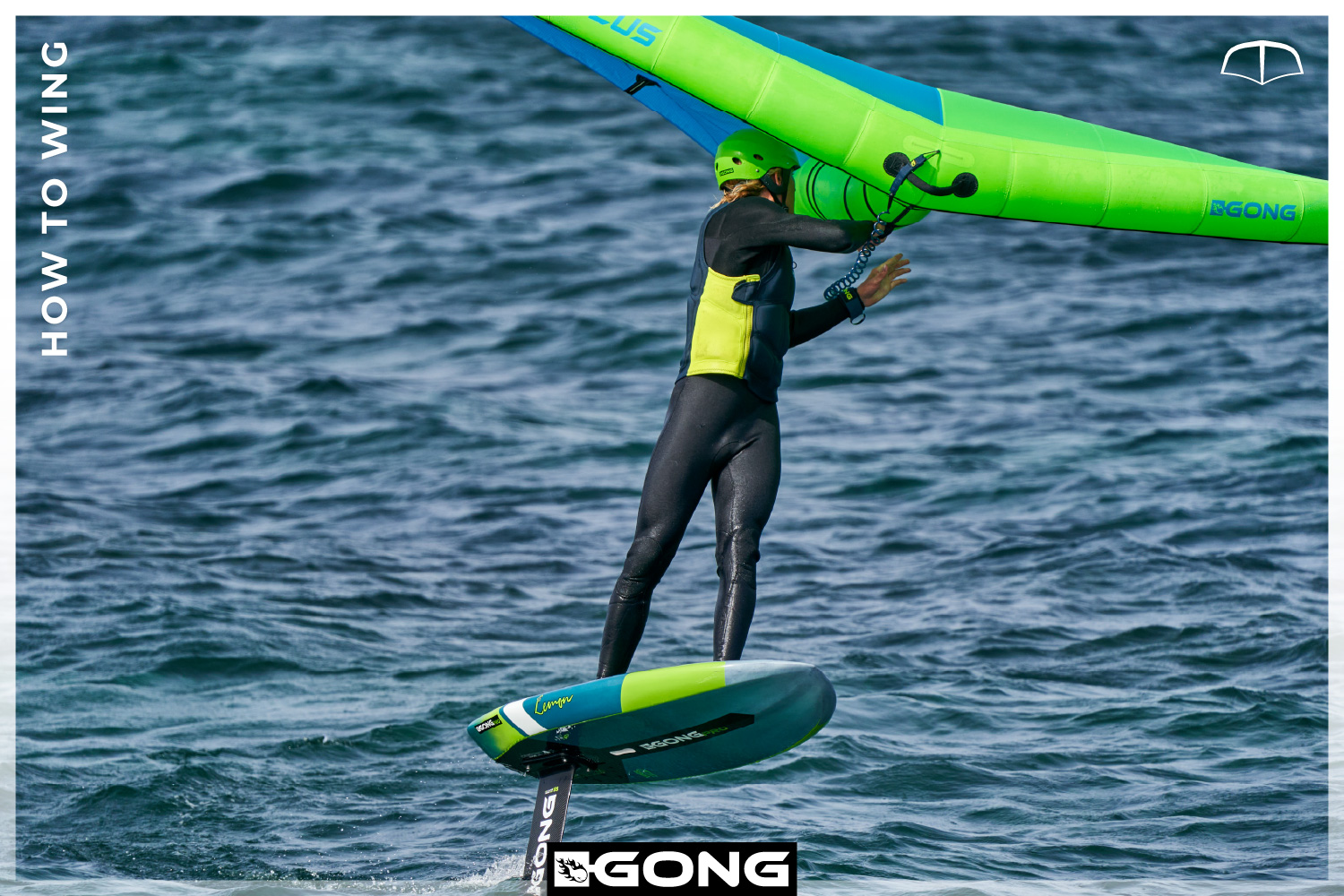
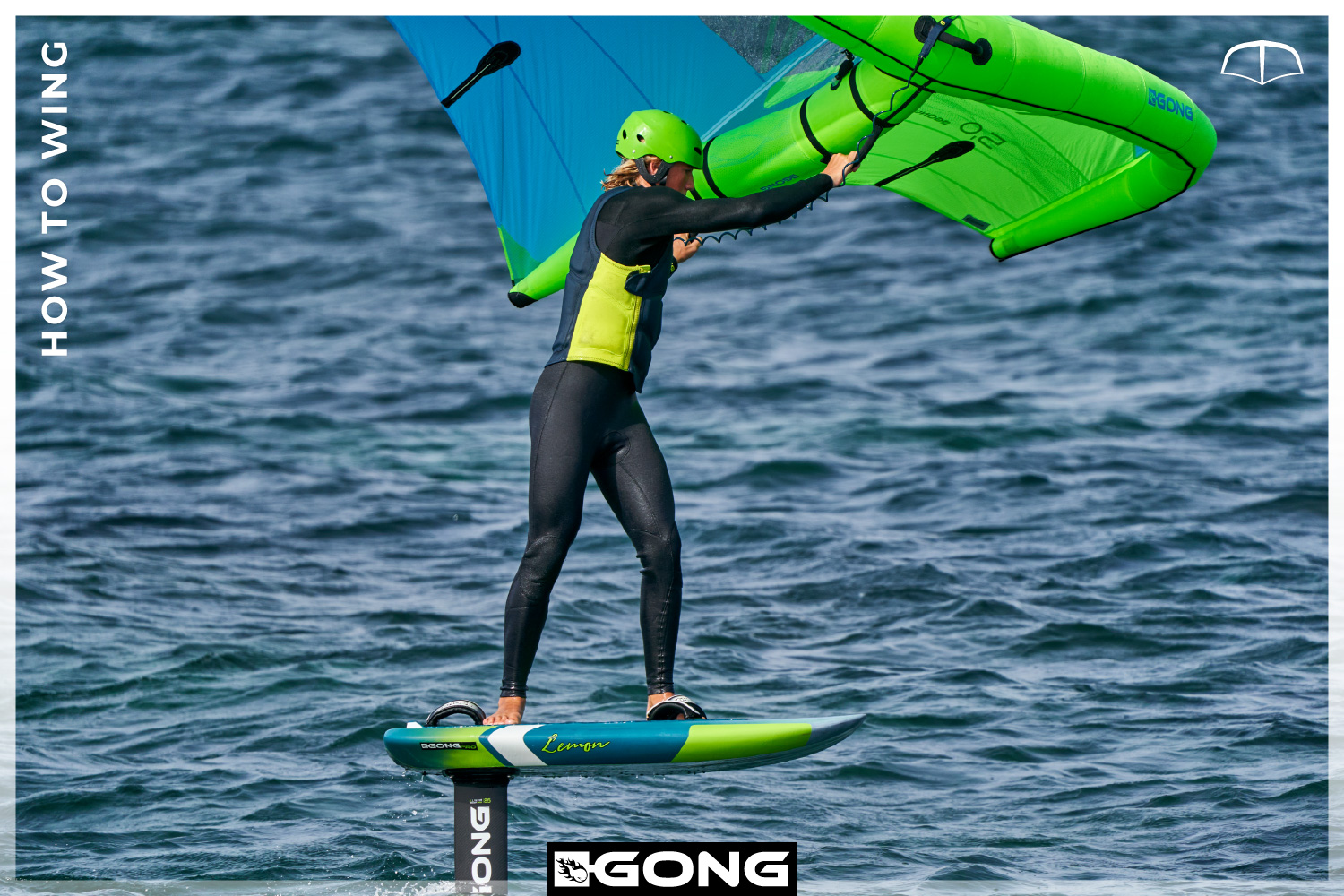
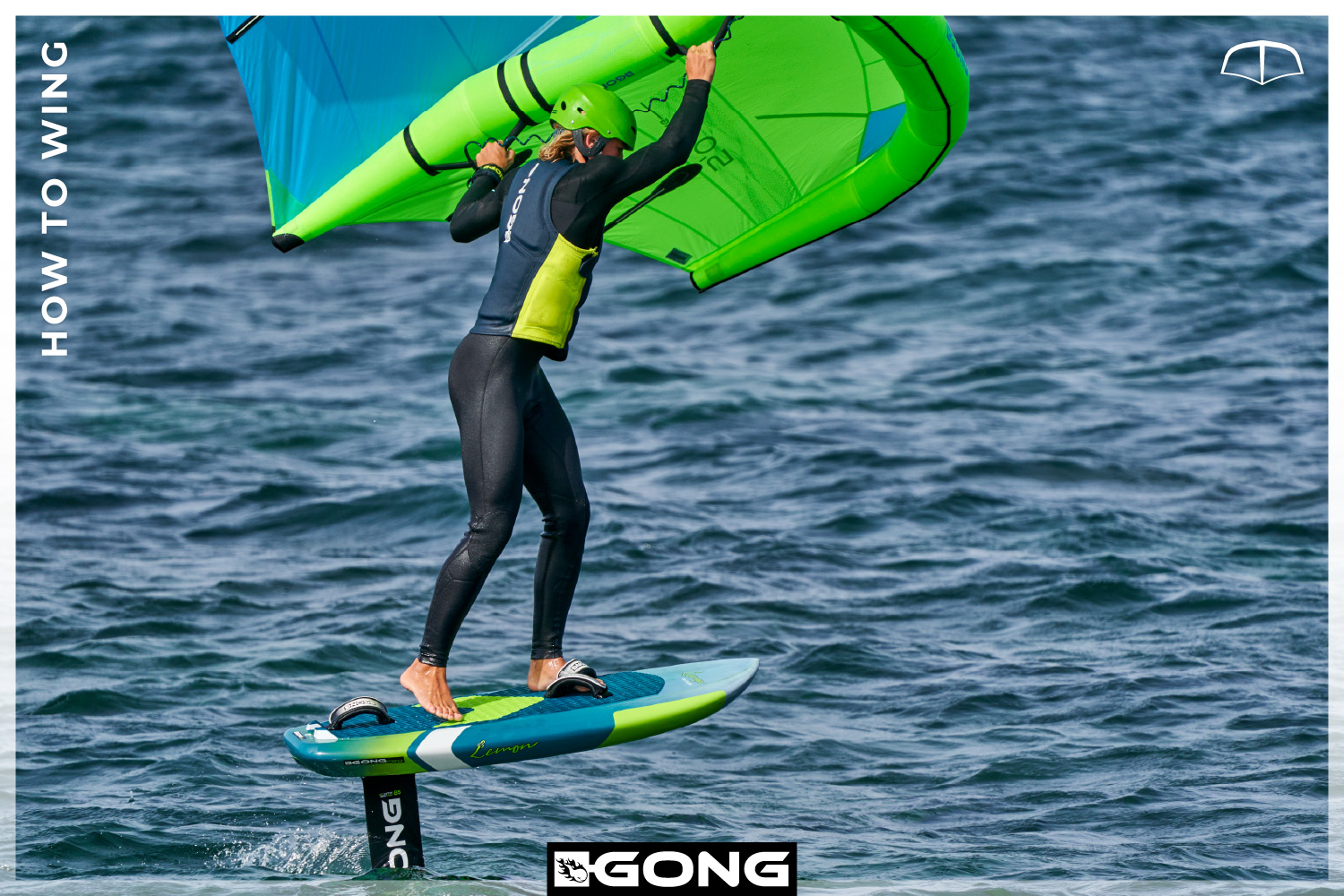
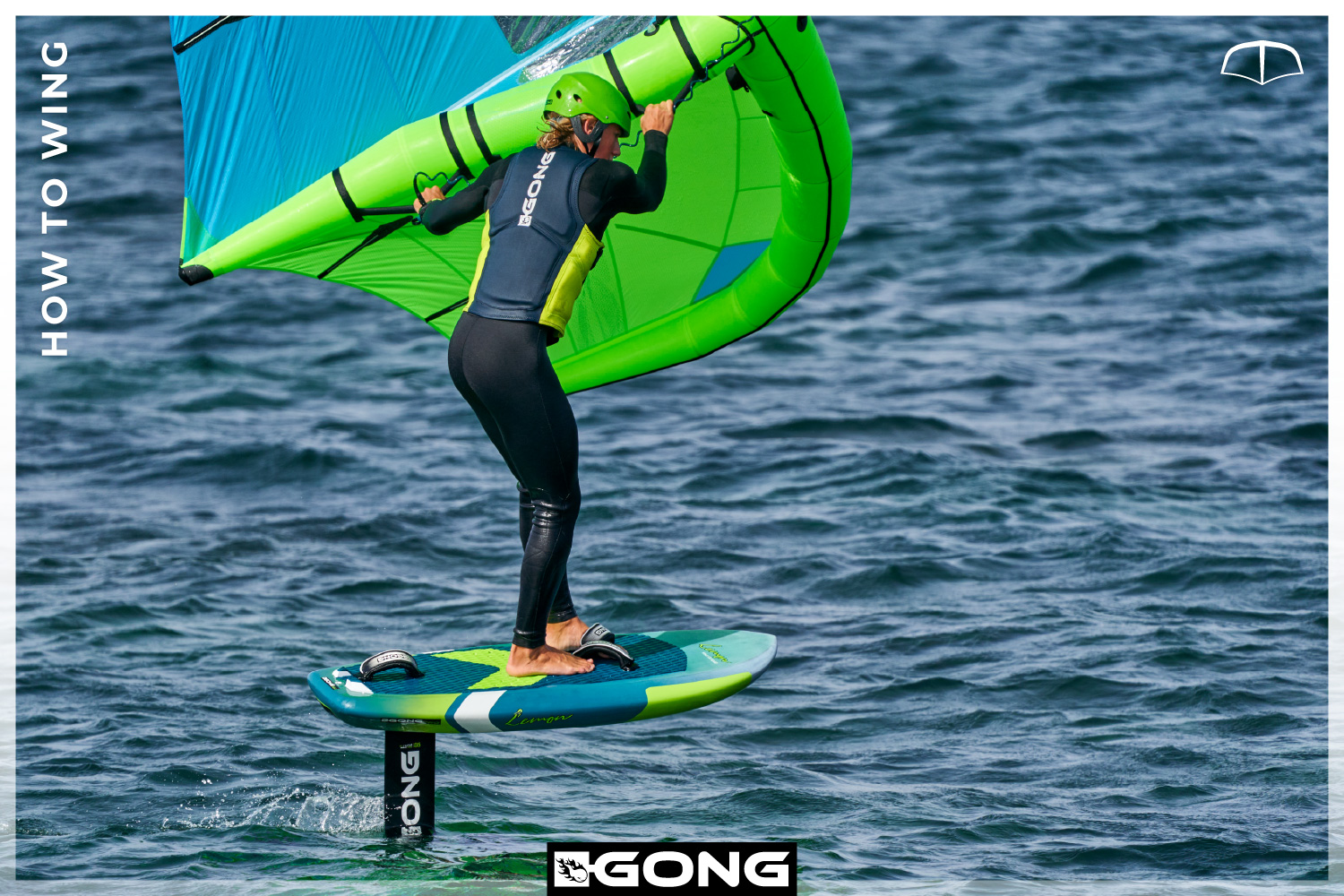
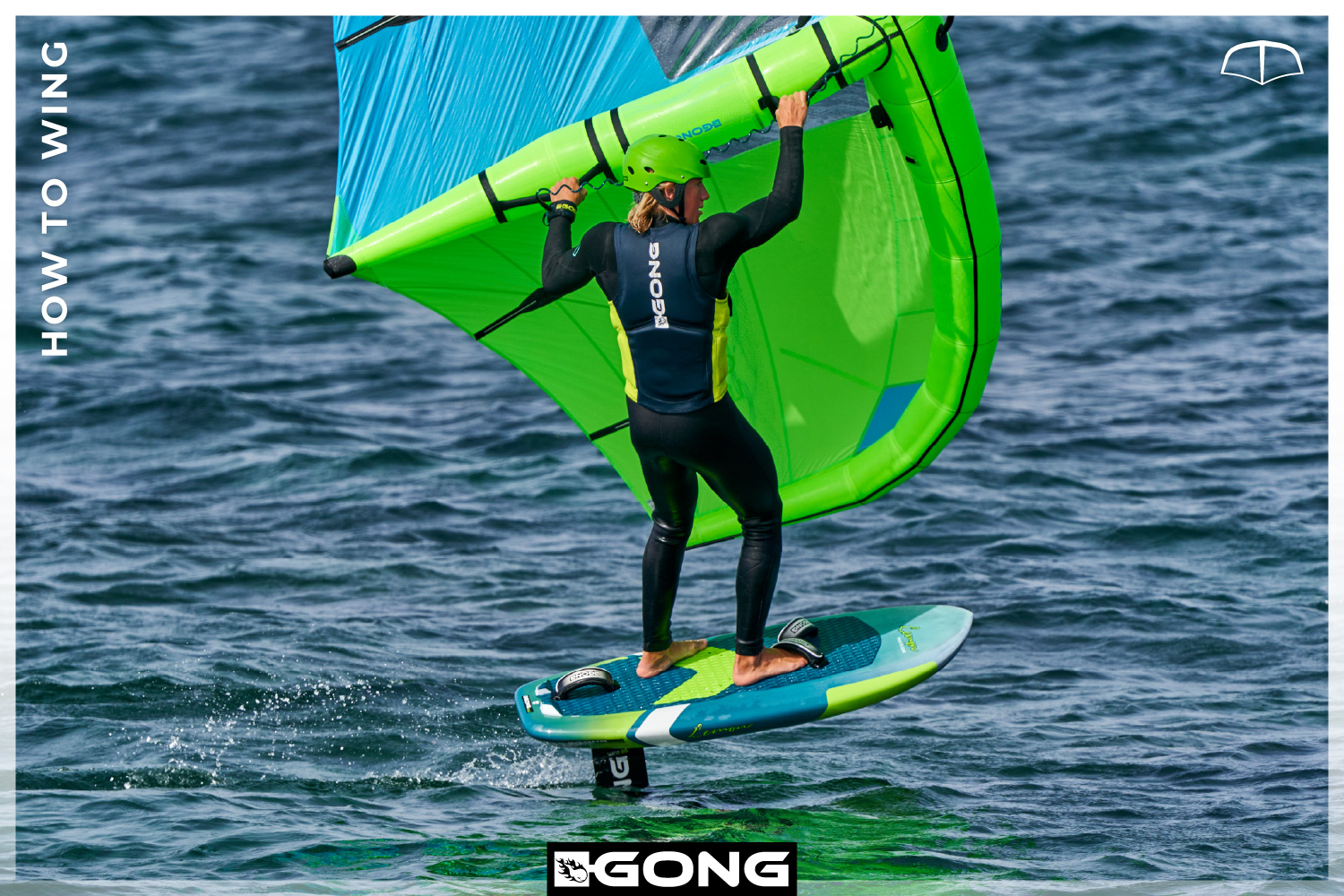
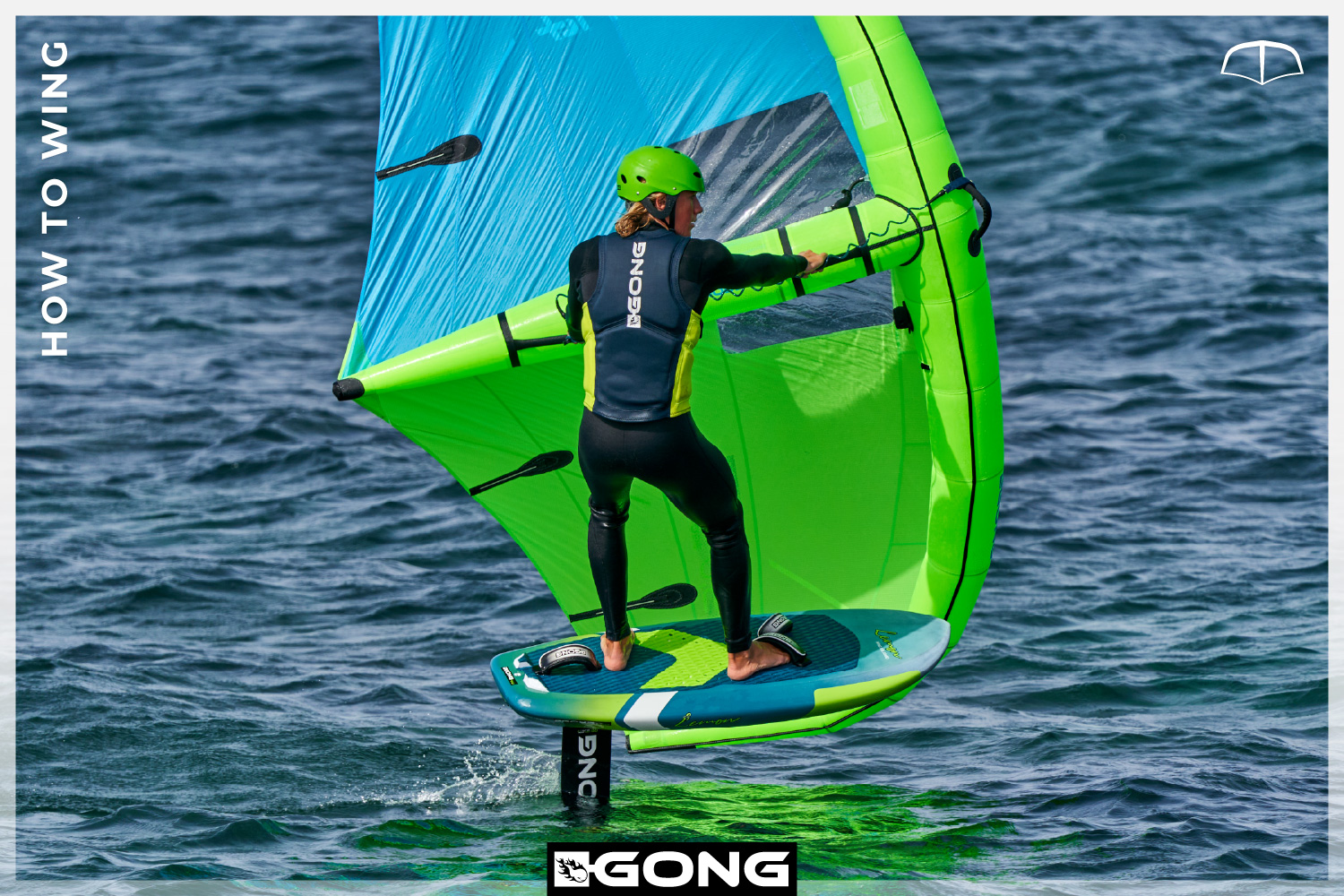
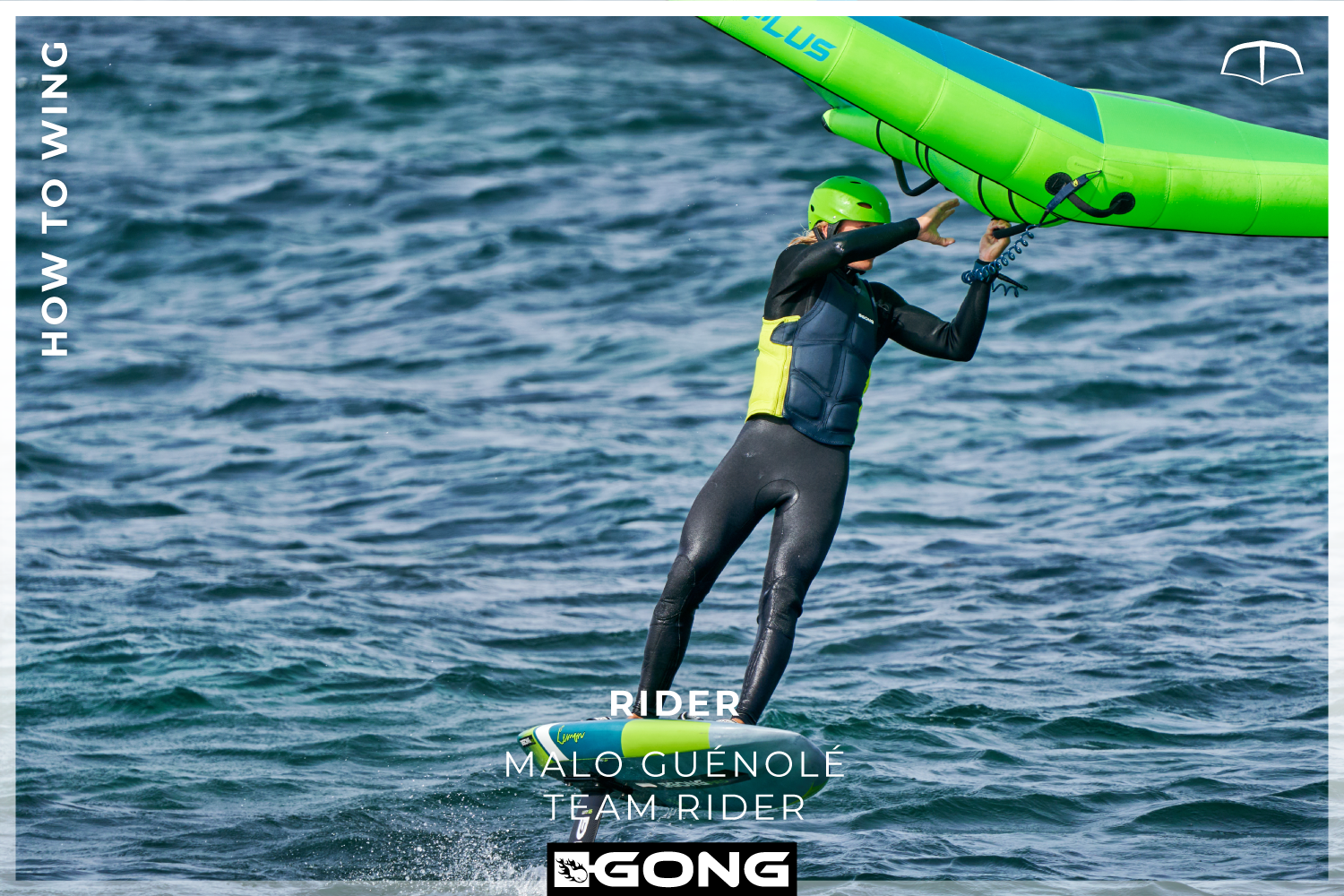
Wing foiler : Malo, team rider GONG, en Lemon FSP Pro et Wing Plus.
Switch to tack
To do a simple tack or switch to tack, you have to build up with speed; it’s the only way to get out of the move in flight. This is especially true for switch to tack because in simple tack you can cheat more easily by pumping for example, but the goal is to do it cleanly, so with speed.
Switch the feet
In the crosswind, we’re going to come and switch the feet. We take the foot out of the back strap. We put a pump in with this one. And as soon as you feel the impulse: you throw your back foot into the forward leeward strap. The big toe of the back foot should be aimed at the big toe of the front foot on the inside of the strap. That’s the trick to avoid hurting your toes when getting out in the strap.
When the toe of the back foot touches the toe of the front foot, it gives the toe of the back foot the heads up on getting back to the where the back foot was : just in front of the back strap but slightly upwind (both feet on both sides of the central axis of the board). Your new rear foot corrects all the balance problems of the board, laterally and longitudinally to avoid touching the water.
Here you are in switch with the wing behind you and the chest rotated 90° forward. Your rear arm is very bent to keep it in its initial angle. You have to have decent speed.
Take angle
Then you will take the angle to the wind by pressing on the toes. If you press only on the toes, the foil will refuse to obey. Your weight being dragged downwind, the foil will want to come out and into the wind and you will fall with your chest into the front wing/stab. This is unpleasant, dangerous and almost unavoidable. The only solution is to crouch as much as possible. At the beginning of the turn, try to bring the it as windward as possible, like the bottoms turns of the 70’s at the Pipe. It’s elegant and efficient.
You will sheet the wing slightly as you go upwind, otherwise you risk being overwhelmed by the pull of the leeward wing. Note that tucking the wing into the wind is equivalent to braking. The closer you get to the windward axis, the further you will go into the wind and the more you will move the front hand upwind, making the wing look like an umbrella.
Once we start luffing towards the wind axis we will try to lighten the Board. We will progressively transfer the weight from a lift on the wing to a support on the foil. That is to say that we will carry ourselves less with our arms and more with our legs.
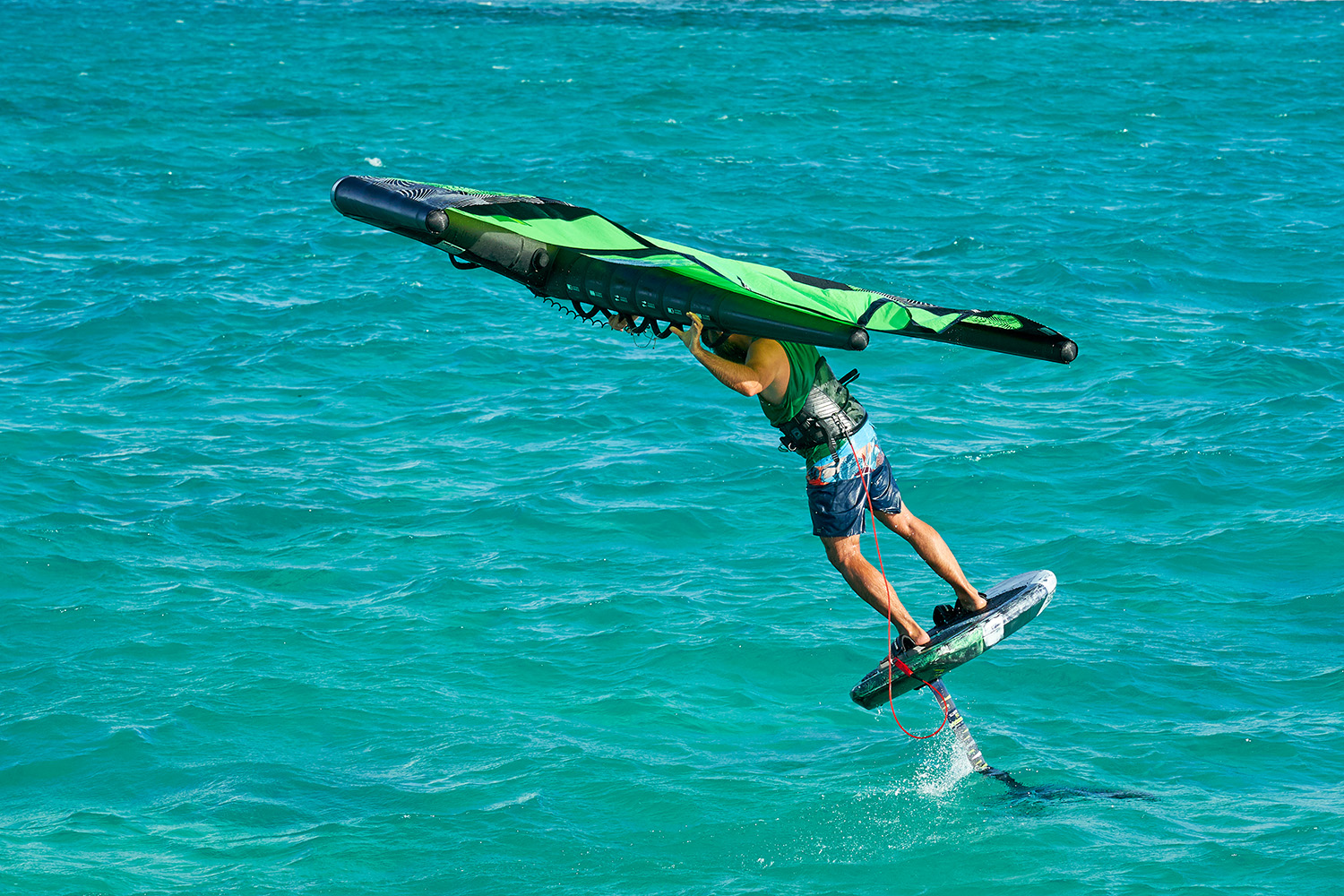
The turn
Once you are close to the wind axis, you have to continue the curve and prepare the change of hands. During this change, you will have no more traction on the wing. So, all your weight will rest on the foil. If you are at this moment in the move without speed, it’s game over: you reposition and you have a good chance to lose your balance. So, the solution is to tighten the turn more and more as you get closer to the wind axis. And as soon as you let go of the wing to change hands, you put a pump into the foil, mainly in the rear leg, to bring it up enough; time to get back on the wing. The other solution is to close the curve violently but it’s more complicated.
So, the higher your base speed, the easier it is.
And the tighter your turn, the easier it is.
When you get that, you find that you have plenty of time to change hands on the wing.
To change hands
To make a nice hand change you need to organize the path of your hands:
- My back hand comes on the handle with my front hand.
- My ex front hand slides along the bladder and naturally comes to grab the rear full power ride handle. Usually you can take your hand off the bladder, but at the beginning the ideal is really to slide your hand over the big section of the bladder. You can even make up for it when you come out of the move by grabbing the bladder with your fingertips stiched to the spinnaker, it works perfectly
During this phase of changing hands, you will rotate your chest by 90° in the direction of the curve to accompany the passage of the front hand, then the back hand. This way you won’t have your back to the wing on the new tack. This rotation will change the way you handle the angles of the wing, so remember to use the correct amount of tucking.
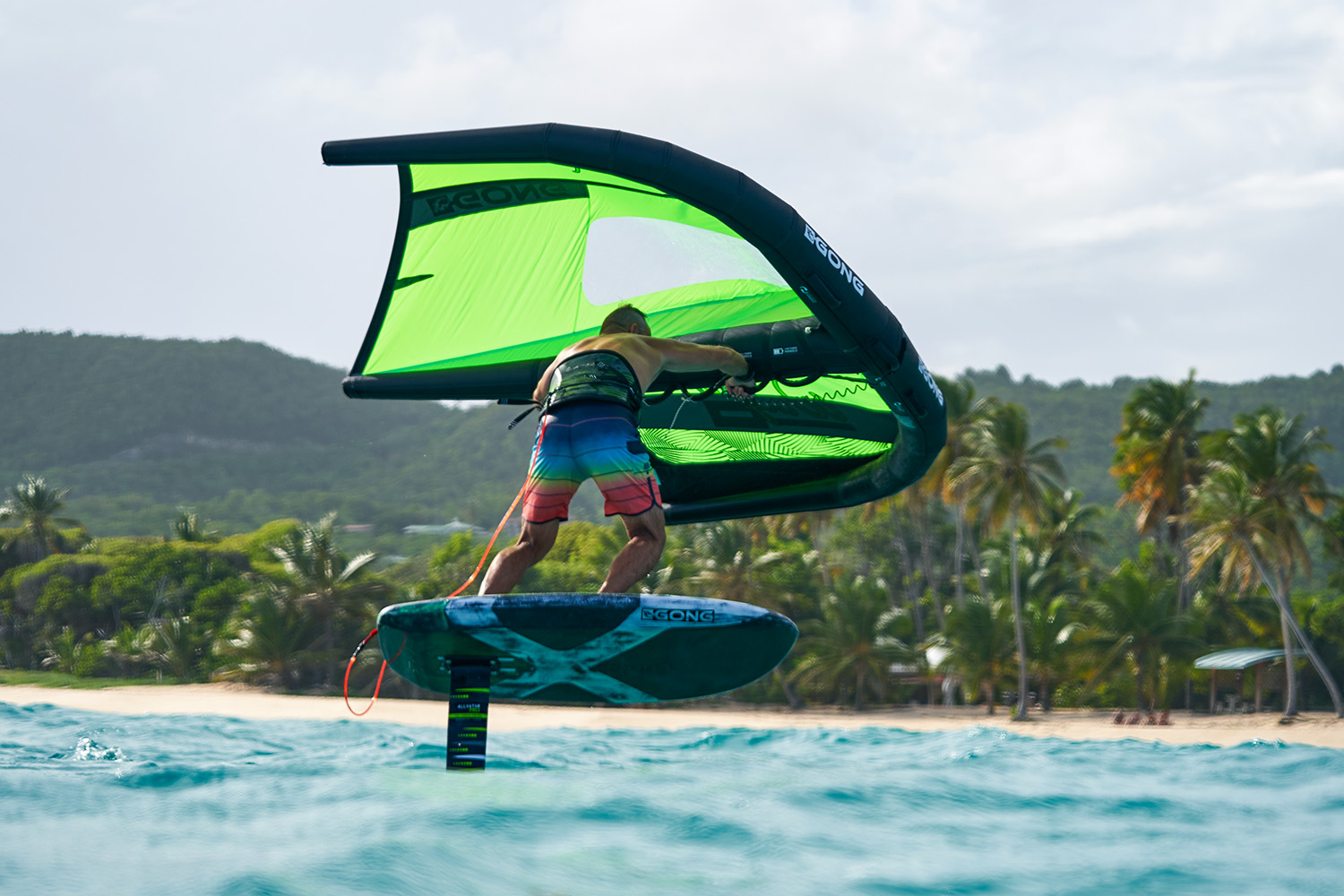
Continue the turn
The next step is to continue the turn by flapping once you have passed the wind axis and thus re-launch the foil. At this point you will start to hang on to the wing again. The hands are in place, the turn is over, and you can prepare to tuck it in.
This phase is much simpler when you can regain traction with the wing or when you still have speed, but you can also use the foil and its lift with a few pump strokes.
The key to the relaunch is to lower the front hand to put the wing back on the screen, well in front of you as soon as possible. So, the more you reduce the hang glide between your arms after the wind has passed, the faster you will go back.
Finish the movement
The last phase consists of tucking and tilting the foil into the wind to regain support against the traction of the wing. We will gradually bring the support from the heels to the toes, taking care not to touch the water. The body will lean more and more into the wind as you tuck in. It is the front shoulder that engages the body weight in the wind. Remember to manage the power of the wing because often you will reach the end of your initial speed and you will have to launch hard.
Key points:- Having speed.
- Use the swell and chop to maintain speed.
- Manage your weight transfer well.
- Have an automated and clean hand movement.
Tack to switch
It’s exactly like simple tack but you attack in the opposite direction: face the wing to get out from behind.
In order to do a tack to switch you need to arrive with speed; this is the only way to get out of the move while in flight.
Take angle
Then we’ll come to take angle to the wind by pressing on the heels. The easiest way to do this is to take your foot out of the back strap before turning to place it slightly downwind and prepare the transition from heel to toe support. The front foot is in the strap, so naturally upwind. You will shock the wing a little as you turn upwind, otherwise there is a risk of being overtaken by the lee of the wing. Note that tucking the wing facing the wind is equivalent to braking it. And we’re going to umbrella it by slightly lowering the back hand while raising the front hand.
Once we start luffing towards the wind axis we will try to lighten the board. We will gradually transfer the support from a lift on the wing to a support on the foil. That is to say that we will carry ourselves less with our arms and more with our legs.
The turn
Once you are close to the wind axis, you have to continue the turn and prepare the change of hands. During this change, you will have no more traction on the wing. So, all your weight will rest on the foil. If you are at this moment in the move without speed, it’s game over : you reposition and you have a good chance to lose your balance. So, the solution is to tighten the turn more and more as you get closer to the wind axis. And as soon as you let go of the wing to change hands, you put a pump in the foil, mainly in the rear leg, to bring it up enough; time to get back on the wing.
So, the higher your base speed, the easier it is.
And the tighter your turn, the easier it is.
When you have understood this, you can see that you have plenty of time to change hands on the wing.
To change hands
To make a nice hand change you need to organize the path of your hands:
- My back hand comes on the handle with my front hand.
- My ex front hand slides along the bladder and naturally comes to grab the rear full power ride handle. Usually you can take your hand off the bladder, but at the beginning the ideal is really to slide your hand over the big section of the bladder. You can even make up for it when you come out of the move by grabbing the bladder with your fingertips stiched to the spinnaker, it works perfectly
During this phase of changing hands, you will rotate your chest by 90° in the direction of the curve to accompany the passage of the front hand, then the back hand. This way you won’t have your back to the wing on the new tack.
Continue the turn
The next step is to continue the turn by flapping once you have passed the wind axis and thus re-launch the foil. At this point you will start to hang on to the wing again. The hands are in place, the turn is over, and you can prepare to tuck it in.
This phase is much simpler when you can regain traction with the wing or when you still have speed, but you can also use the foil and its lift with a few pump strokes.
The key to the relaunch is to lower the front hand to put the wing back on the screen, well in front of you as soon as possible. So, the more you reduce the hang glide between your arms after the wind has passed, the faster you will go back.